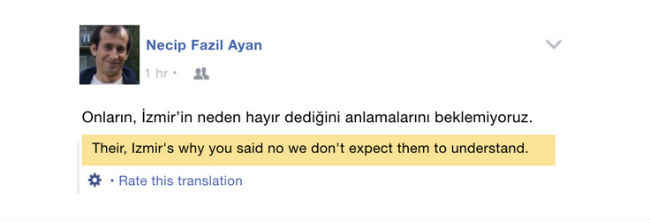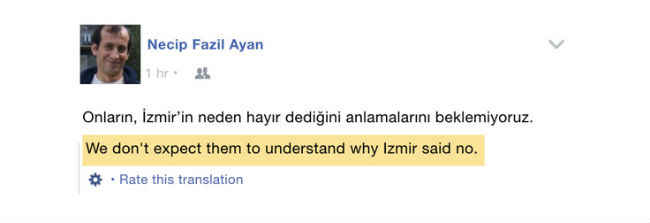Here’s how Facebook plans to improve translations on its platform

Hint: It involves AI and neural networks.
You must have seen those “See translation” messages that appear below your friend’s Facebook status sometimes. With a billion users on its platform, Facebook thought it fit to try and translate languages to something you can understand. But, “creating seamless, highly accurate translation experiences for the 2 billion people who use Facebook is difficult. We need to account for context, slang, typos, abbreviations, and intent simultaneously,” Facebook said in a blog post. In order to offer better translation results, the company has moved from a phrase-based system to neural networks now.
In with the times
That’s in line with most everything technology giants in the Silicon Valley have been up to. Machine learning and AI have become the talk of the town, with Google, Facebook, Apple and everyone else leading the charge. Using machine learning to translate languages online is not new, but it is new for Facebook. Although the company is no stranger to AI research and machine learning by any measure.
“To continue improving the quality of our translations, we recently switched from using phrase-based machine translation models to neural networks to power all of our backend translation systems, which account for more than 2,000 translation directions and 4.5 billion translations each day,” Facebook said.
Facebook admits that its phrase-based system had limitation, especially when it comes to languages with “markedly different word openings”. The phrase-based system broke sentences into words, or shorter phrases, and then translate each. The neural net, on the other hand, manages each sentence at a time, translating contextually, rather than word-to-word. Facebook provides the following example to show how this can result in more meaningful translations.
Phrase-based translation
Contextual translation, using neural networks
The company claims it saw average relative increase of 11 percent in BLEU, which is a an algorithms that determines accuracy of machine translation.
Into the unknown
Further, the use of neural networks allows Facebook to deal with unknown words and slang more effectively. The company created a “lexicon” from its training data. So, when the neural network finds a word it hasn’t seen before, it generates a placeholder for this word and looks it up in the lexicon Facebook created. This allows the algorithm to replace slang words like “tmrw” to “tomorrow” when needed. So, if the AI is translating “tmrw” to Spanish, it find the word “tomorrow” in its dictionary and then translates it to “manana” in Spanish. The user, of course, gets the final desired results.
FAIR
The Facebook Artificial Intelligence Research (FAIR) team was also involved in this new system. The company says it used FAIR’s recently published research on convolutional neural networks (CNNs) to develop the new system. CNNs are neural networks inspired by biological processes in the visual cortex of your brain.
“We launched CNN models for English-to-French and English-to-German translations, which brought BLEU quality improvements of 12.0 percent (+4.3) and 14.4 percent (+3.4), respectively, over the previous systems. These quality improvements make CNNs an exciting new development path, and we will continue our work to utilize CNNs for more translation systems,” Facebook says.






